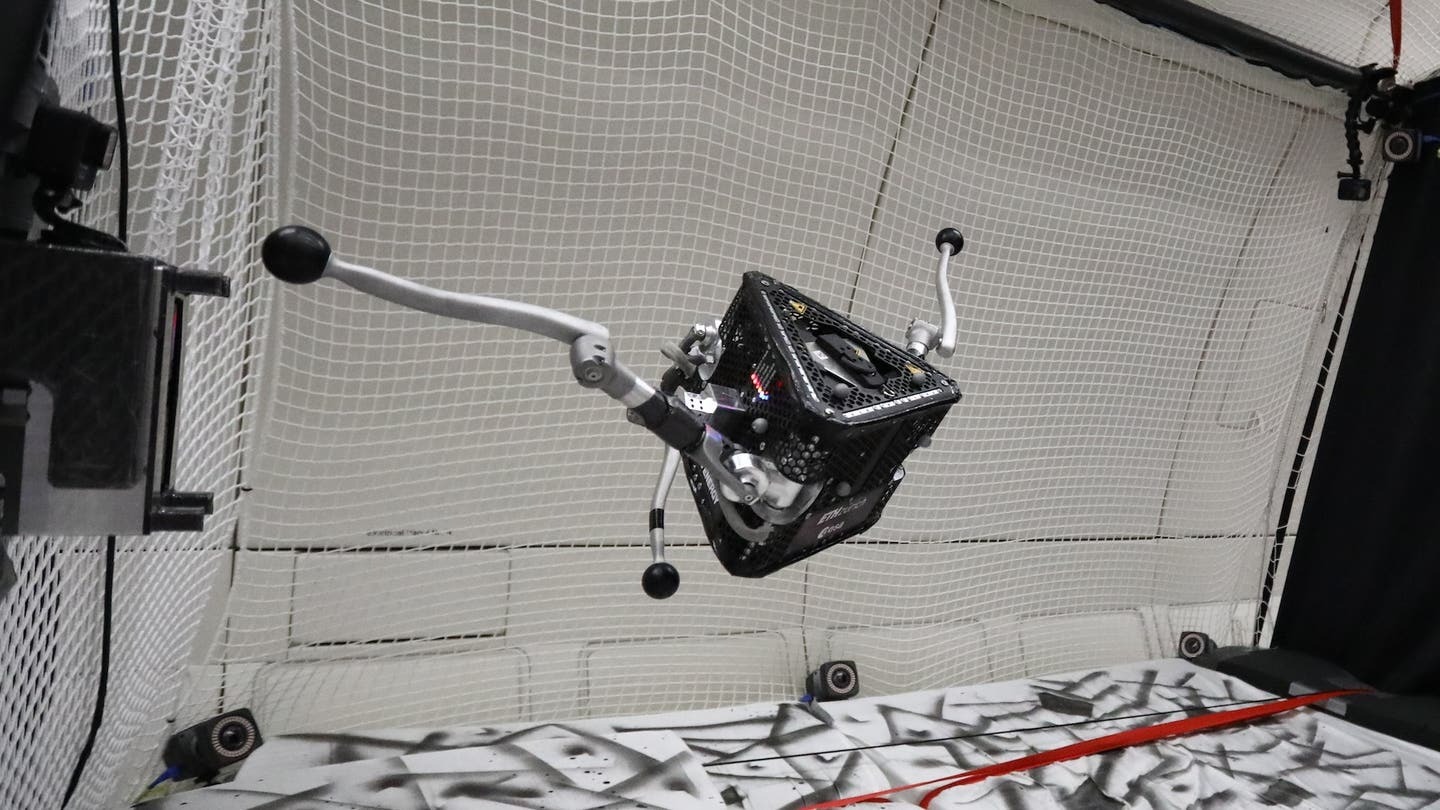One of the astronaut training sessions before being sent into space takes place on specially modified aircraft capable of parabolic flights. During such training, the aircraft begins to descend at the speed of free fall, and the effect of microgravity is formed inside for a short time. During a recent parabolic flight, a strange robot was subjected to such a test, which in the future would explore the Solar System.
A few years ago, eight students from the Swiss Higher Technical School of Zurich jointly made a significant contribution to the development of SpaceHopper. This small three-legged robot was specially designed to work in low gravity conditions, for example, on asteroids. Using neural networks for training, SpaceHopper learned how to jump and move on the surface, using the low gravity of a space body, navigate and stabilize in the air before landing safely. It can repeat this process to effectively cover significant distances.
However, checking its performance in real conditions is a crucial step. Sending the SpaceHopper to the nearest asteroid is not the most efficient or easiest way to test its functionality. However, thanks to cooperation with the European Space Agency (ESA) and Novespace, a company specializing in zero gravity flights, the robot was able to pass tests in a microgravity environment.

During a recent 30-minute parabolic flight, scientists allowed SpaceHopper to perform more than 30 weightlessness simulations aboard Novespace’s Airbus A310 aircraft. Each simulation lasted 20-25 seconds. In the first experiment, during zero gravity, the robot was able to lift itself off the floor using only the strength of its legs. In the second test, the SpaceHopper was able to orient itself and gently sit down on a protective grid on the wall.
SpaceHopper, in fact, was able to prove its performance in conditions with lower gravity than on an asteroid. Although the robot would not have been able to sit down as it would have been possible in microgravity, its ability to navigate and adjust in real time was a significant step forward for scientists.
The creators of SpaceHopper believe that deploying their robot on an asteroid in one day can help astronomers gain new knowledge about the history of the universe, as well as increase understanding of the oldest periods of our Solar System. In addition, many asteroids contain valuable rare metals that can become a valuable source for various industrial sectors on Earth.
Earlier, we reported on how the German Chancellor’s plane was used to test a lunar wheelbarrow.
According to popsci.com
Follow us on Twitter to get the most interesting space news in time
https://twitter.com/ust_magazine


